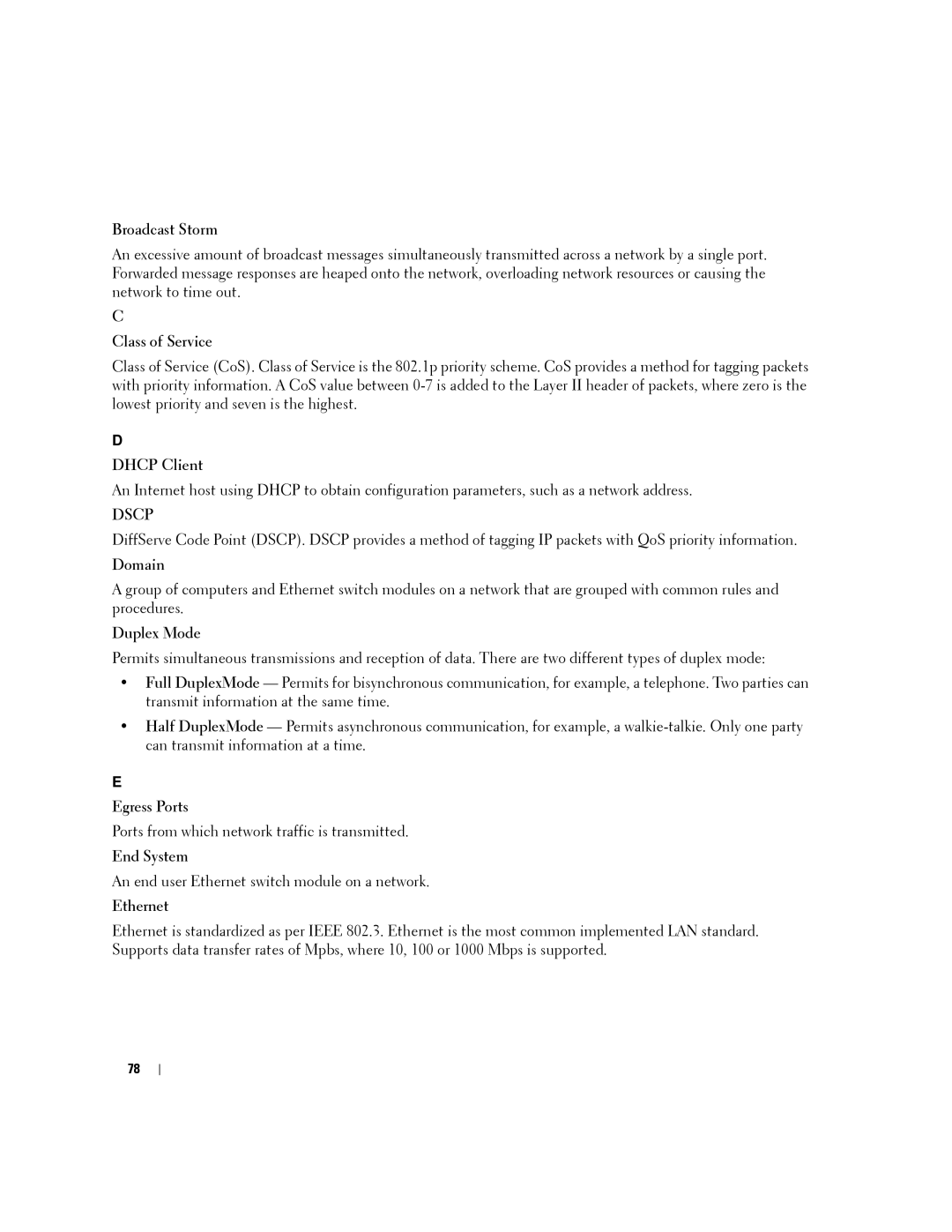Broadcast Storm
An excessive amount of broadcast messages simultaneously transmitted across a network by a single port. Forwarded message responses are heaped onto the network, overloading network resources or causing the network to time out.
C
Class of Service
Class of Service (CoS). Class of Service is the 802.1p priority scheme. CoS provides a method for tagging packets with priority information. A CoS value between
D
DHCP Client
An Internet host using DHCP to obtain configuration parameters, such as a network address.
DSCP
DiffServe Code Point (DSCP). DSCP provides a method of tagging IP packets with QoS priority information.
Domain
A group of computers and Ethernet switch modules on a network that are grouped with common rules and procedures.
Duplex Mode
Permits simultaneous transmissions and reception of data. There are two different types of duplex mode:
•Full DuplexMode — Permits for bisynchronous communication, for example, a telephone. Two parties can transmit information at the same time.
•Half DuplexMode — Permits asynchronous communication, for example, a
E
Egress Ports
Ports from which network traffic is transmitted.
End System
An end user Ethernet switch module on a network.
Ethernet
Ethernet is standardized as per IEEE 802.3. Ethernet is the most common implemented LAN standard. Supports data transfer rates of Mpbs, where 10, 100 or 1000 Mbps is supported.
78
